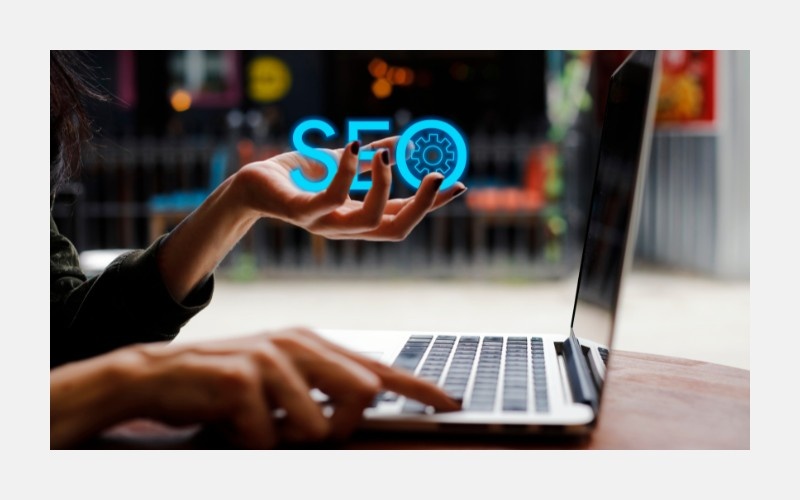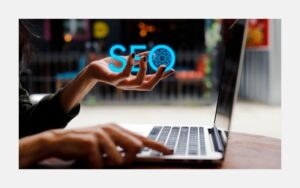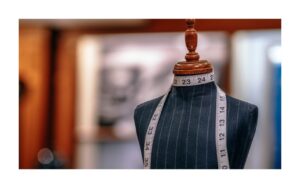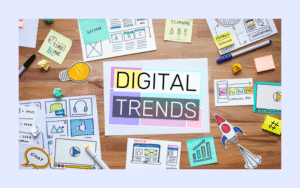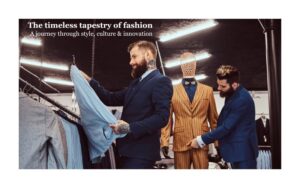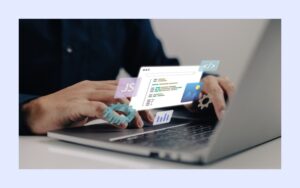Keyword research describes the various means that potential customers use to look for fashion goods. Product-based keywords reach ready-to-buy searches such as “black leather ankle boots.” Trend-based keywords capture research-stage searches such as “fall 2024 fashion trends.” Question-based keywords reach informational intent such as “how to style wide-leg pants.” Brand-based keywords safeguard brand name visibility from other companies.
On-page optimization reconciles design for aesthetics with technical SEO needs. Optimization of product titles involves targeted keywords but also being natural and interesting. Meta descriptions summarize product benefits that invite clicks. Header hierarchies logically organize content. Image alt text labels visuals with relevant terms. URL structures form readable, keyword-contained addresses.
Technical SEO allows search engines to crawl, index, and rank fashion sites optimally. Site architecture makes logical hierarchies that allow crawling efficiently. XML sitemaps inform site structure to search engines. Page speed optimization keeps it fast regardless of image-intensive content. Mobile optimization provides great smartphone experiences. Structured data markup allows rich search results that show product information.
Link building achieves authoritative backlinks, indicating credibility to search engines. Content marketing earns natural links via useful resources. Influencer collaborations acquire links from fashion-relevant publications and blogs. Digital PR achieves placements in industry media outlets. Strategic collaborations with related brands create two-way linking opportunities.
Visual Search and AI: The Future of Fashion Discovery
Visual search enables customers to take pictures of products and discover similar products on the spot. Camera search sidesteps the challenge of describing style in words. Screenshot search discovers products viewed on social sites or other websites. Match refinement narrows results by price range, color options, or certain attributes. Availability checking identifies which visually comparable items are in stock.
Style suggestions employ AI to learn about individual aesthetics and recommend supportive pieces. Outfit creation produces harmonious outfits from stock. Seasonal adjustment fine-tunes recommendations in accordance with weather fluctuations. Occasion styling recommends suitable choices for a particular event. Trend relevance integrates existing fashion trends without undermining individual style.
Conversational commerce facilitates shopping using natural language chat interfaces. Product discovery via conversation queries to narrow down options to relevant choices. Size and fit support offers individualized advice. Styling guidance provides professional fashion advice. Order tracking responds to status inquiries conversationally. Returning initiation manages exchanges using chat.
Predictive design takes data analysis and uses it to anticipate the direction of trends that guide product development. Analysis of social media detects upcoming styles and colors in demand. Customer needs and unmet demand are uncovered by sales data. Search trend tracking indicates growing interest in certain styles. Weather correlation relates climate behaviors to need for weather-related products.
Subscription Models and Fashion Box Services
Subscription fashion business models have challenged traditional fashion retail by offering expertly curated discovery experiences and repeat revenue streams. Digital platforms make complicated logistics, personalization algorithms, and adaptive management possible.
Style quiz personalization collects data that directs choice algorithms. Aesthetic preference questions determine style orientations. Fit data is used for proper sizing between brands. Lifestyle questions direct occasion-relevant choices. Budget constraints establish quality expectations for products and brands. Frequency preferences decide shipment timing.
Algorithmic styling marries human and data science expertise. Collaborative filtering detects patterns across similar customer tastes. Style rules embody fashion guiding principles such as color matching and proportions. Inventory optimization weighs showing customers new items against guaranteed availability. Human stylist oversight introduces judgment that pure algorithms cannot match.
Flexible subscription management accommodates new circumstances and tastes. Skip options enable skipping deliveries when traveling or on a budget. Frequency adjustment alters delivery frequency. Profile updates adjust to new style tastes or size. Category focus steers selections toward particular product types. Cancellation processes enable easy termination of subscriptions.
Keep-what-you-like models decrease commitment anxiety by enabling unwanted item return. Try-before-you-buy eliminates initial payment. Discount rewards for keeping whole boxes. Feedback integration learns from keep vs. return choices. Prepaid return shipping makes it easier to send back unwanted items.
Loyalty Programs and Customer Retention Strategies
Acquiring new customers costs significantly more than retaining existing ones, making loyalty programs critical for sustainable fashion business models. Digital platforms enable sophisticated programs that reward engagement, encourage larger purchases, and build emotional connections extending beyond transactional relationships.
Point-based incentives encourage repeat behavior and participation. Purchase points accrue in proportion to spending levels. Bonus point offers a reward for particular actions such as reviews or social sharing. Tiered systems offer escalating rewards as customers hit higher spending tiers. Point redemptions give flexible value capture from discounts to access.

Exclusive access evokes feelings of belonging and status. Early sale access gives reward to loyal customers ahead of public announcements. Limited edition products exclusive to program members. Virtual styling sessions offer customized consultation. VIP event invites to fashion shows or store openings.
Referral programs convert happy customers into brand promoters. One-of-a-kind referral codes monitor successful introductions. Two-for-one incentives pay the referrer and the referred customer. Social sharing integration simplifies referrals. Performance monitoring indicates referral success and rewards earned. Advocate rewards honour top referrers.
Gamification introduces entertainment value to loyalty participation. Achievement badges identify specific achievements. Challenge campaigns induce desired behaviors with unique rewards. Progress visualization indicates progress toward the next level or reward. Social leaderboards establish friendly competition between participants. Limited-time missions introduce urgency and excitement.
The Role of Content in Fashion Brand Building
Brand storytelling conveys founding stories, creative visions, and values that are unique from competitors. Origin stories make brands human through founder stories. Design philosophy explanations describe aesthetic principles. Community engagement shows social responsibility.
Style education offers functional benefits with the establishment of expertise. Trend reports examine seasonal fashion trends. Styling advice instructs on outfit coordination techniques. Wardrobe building guidelines assist clients in creating adaptable collections. Body type guidance considers fit and flatter issues. Occasion dressing advice makes event preparation easier. Color theory applications discuss psychological and aesthetic effects.
Behind-the-scenes material answers questions regarding fashion business operations. Design process records reveal collection creation from ideas to completion. Photoshoot peeks into the creative teams and settings. Factory tours illustrate production quality and environments. Buyer interviews describe curation choices. Influencer collaboration previews demonstrate collaboration creation.
User-generated content features actual customers and community building. Customer feature spotlights highlight personal style expressions. Styling contest submissions reveal innovative outfit pairings. Review compilations collect genuine product comments.
Accessibility and Inclusive Fashion Retailing
Fashion accessibility is more than physical disability accommodations, and it includes size, inclusivity, gender diversity, and universal design concepts to allow everyone to engage in fashion culture. Online platforms can more easily promote inclusivity than physical store space, limited by inventory capacity and conventional category structures.
Size inclusivity goes beyond passé standard sizes to include varied body types. Expanded size ranges provide the complete range of human bodies. Fit models embody size diversity in product imagery. Accuracy in size charts enables customers to choose suitable options throughout brands. Fit variety provides alternative cuts catering to various body proportions. No added costs for extended sizes reflect value inclusivity.
Gender-free shopping acknowledges that fashion exists outside binary distinctions. Unisex lines for distinct gender expressions. Categorization by style instead of gender departments. Sorting by fit choice instead of gender assumptions. Language that is free from gendered product names. Representation featuring varied gender expressions on marketing across the board.
Screen reader support allows content to be read by blind users. Color contrast ensures text readability. Captions and transcripts offer alternatives for audio content. Text sizing adjustment allows for vision differences. Clear language is good for cognitive accessibility.
Adaptive apparel provides customers with disabilities that need special design elements. Magnetic buttons substitute for hard buttons. Seated fit styles are for wheelchair users. Sensory-friendly styles eliminate tags and irritating fabrics. Easy-wear styles ease dressing for limited mobility. Clear product labeling describes adaptive features.
Conclusion
Fashion’s transition from bricks-and-mortar retail to digital-first operations is among the most transformative of the last ten years. Those that emerge successfully do not do so by thinking of digital as an add-on channel, however, but by treating it as the centrepiece of the overall customer experience strategy. The technical sophistication of creating and sustaining successful fashion ecommerce websites demands expert-level skills that unite aesthetic sensitivity with engineering mastery.
Collaboration with professional technology companies that know web development and retail commerce is a tactical benefit for fashion companies looking to create or supplement their online presence. Digiworq Marketing & Technology Solutions provides the range of capabilities fashion companies require, from website design solutions that design engaging brand experiences to website design and development solutions that construct strong e-commerce sites. Their website design and hosting solutions offer turnkey platforms for new brands, and the site maintenance services guarantee existing sites are optimized and up-to-date. With extensive retail background as an e-commerce website development company in Bangalore with international presence and as an e-commerce website developer, Digiworq offers the technical knowledge, creative skills, and strategic experience fashion brands require to thrive in increasingly competitive online markets.

